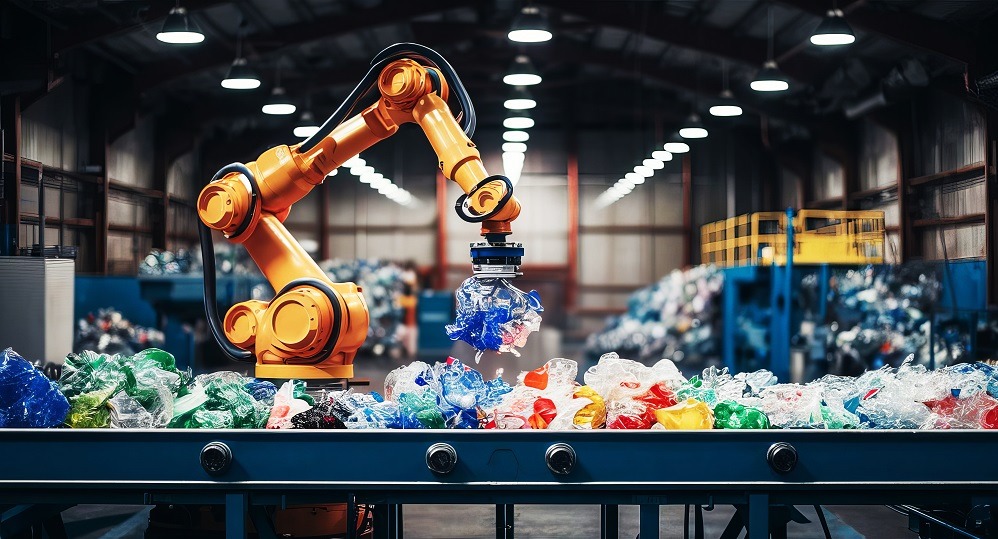AI Robots Revolutionize Recycling: Precision and Efficiency
AI-powered robots are transforming recycling by improving sorting accuracy and efficiency, reducing labor reliance, and enhancing sustainability.

AI Robots Revolutionize Recycling: Precision and Efficiency
In a significant leap for waste management, AI-powered robots are increasingly taking over the labor-intensive, complex task of recycling sorting, promising to transform how materials are recovered and reused. Companies like Glacier, backed by Amazon, are deploying advanced computer vision and robotics technologies to identify and separate recyclables with unprecedented accuracy and speed, addressing long-standing challenges in the recycling industry.
The Rise of AI in Recycling Sorting
Traditional recycling sorting relies heavily on manual labor and rudimentary mechanical systems, which struggle with the sheer diversity and complexity of modern waste streams. Materials such as PET plastics, aluminum, and even less common packaging types often get mis-sorted or end up in landfills, contributing to waste and environmental degradation. AI robots equipped with computer vision can now identify over 70 different material types, enabling far more precise sorting than conventional methods.
One pioneering example is Glacier, an Amazon-backed company that has rapidly expanded its AI robotics presence in the U.S. waste management sector. In 2025 alone, Glacier doubled the number of its deployed robots, which now process about one in ten recycling streams nationwide. Their AI systems use high-definition cameras and machine learning algorithms to recognize recyclable materials on conveyor belts and direct robotic arms to sort them accordingly.
Penn Waste’s Cutting-Edge AI Implementation
A notable deployment of this technology is at Penn Waste, a waste management company in York County, Pennsylvania, which recently installed Glacier’s AI sorting robots. This project aims to improve the output quality of PET plastics and fiber materials, critical components for recycling markets. According to Glacier, the Penn Waste installation marks a milestone, capping a year of rapid growth and technological advancements in AI-enabled material recovery.
The impact is twofold:
- Increased sorting accuracy reduces contamination in recyclable batches, improving their market value and recyclability.
- Automation reduces reliance on human labor for sorting, which is often dangerous and monotonous.
Industry-Wide Investments and Innovations
Glacier is not alone in this AI-driven revolution. Other industry players like Tetra Pak have invested heavily in AI waste sorting technologies, committing US$1.8 million to Recycleye’s AI robotic sorting systems to enhance sustainable packaging recycling infrastructure. Meanwhile, Amazon Web Services (AWS) has also integrated AI-powered robots to extend the lifecycle of data center electronics, highlighting the broad applicability of robotics in various recycling and reuse contexts.
The collective momentum reflects a growing recognition that robotics and AI can address critical bottlenecks in recycling, including labor shortages, sorting inefficiencies, and contamination. By automating sorting, facilities can handle larger volumes with higher precision, supporting circular economy goals and reducing environmental impact.
How AI Robots Work in Recycling Facilities
AI recycling robots employ a combination of:
- Computer vision: Cameras capture images of waste materials as they move on conveyor belts. AI models trained on vast datasets classify items by type, shape, and material.
- Robotic arms: Once identified, robotic arms equipped with grippers or suction mechanisms pick and place items into designated bins.
- Machine learning: These systems continuously improve their accuracy by learning from sorting errors and new material types.
This automation allows for near-real-time sorting speeds far surpassing manual processes, enabling facilities to process more material while reducing contamination rates.
The Broader Impact on Sustainability and Waste Management
The integration of AI robots into recycling aligns with global efforts to reduce landfill use, lower greenhouse gas emissions, and conserve resources by improving recycling rates. Improved sorting accuracy ensures that more materials are recovered and reprocessed, decreasing reliance on virgin materials.
Moreover, automation addresses labor challenges, as recycling facilities often struggle to attract and retain workers for physically demanding and sometimes hazardous sorting jobs.
Visuals Illustrating the Technology
- Images of Glacier’s AI sorting robots actively working on conveyor belts at Penn Waste show robotic arms picking out specific recyclable materials.
- Official logos of Glacier and Penn Waste highlight the partnership driving this innovation.
- Diagrams of AI computer vision systems demonstrate how materials are identified and sorted in real time.
The advent of AI-driven robots in recycling marks a pivotal shift in waste management, unlocking efficiencies and environmental benefits previously unattainable with manual sorting. As companies like Glacier and Tetra Pak expand their investments, the future of recycling looks more automated, precise, and sustainable.


